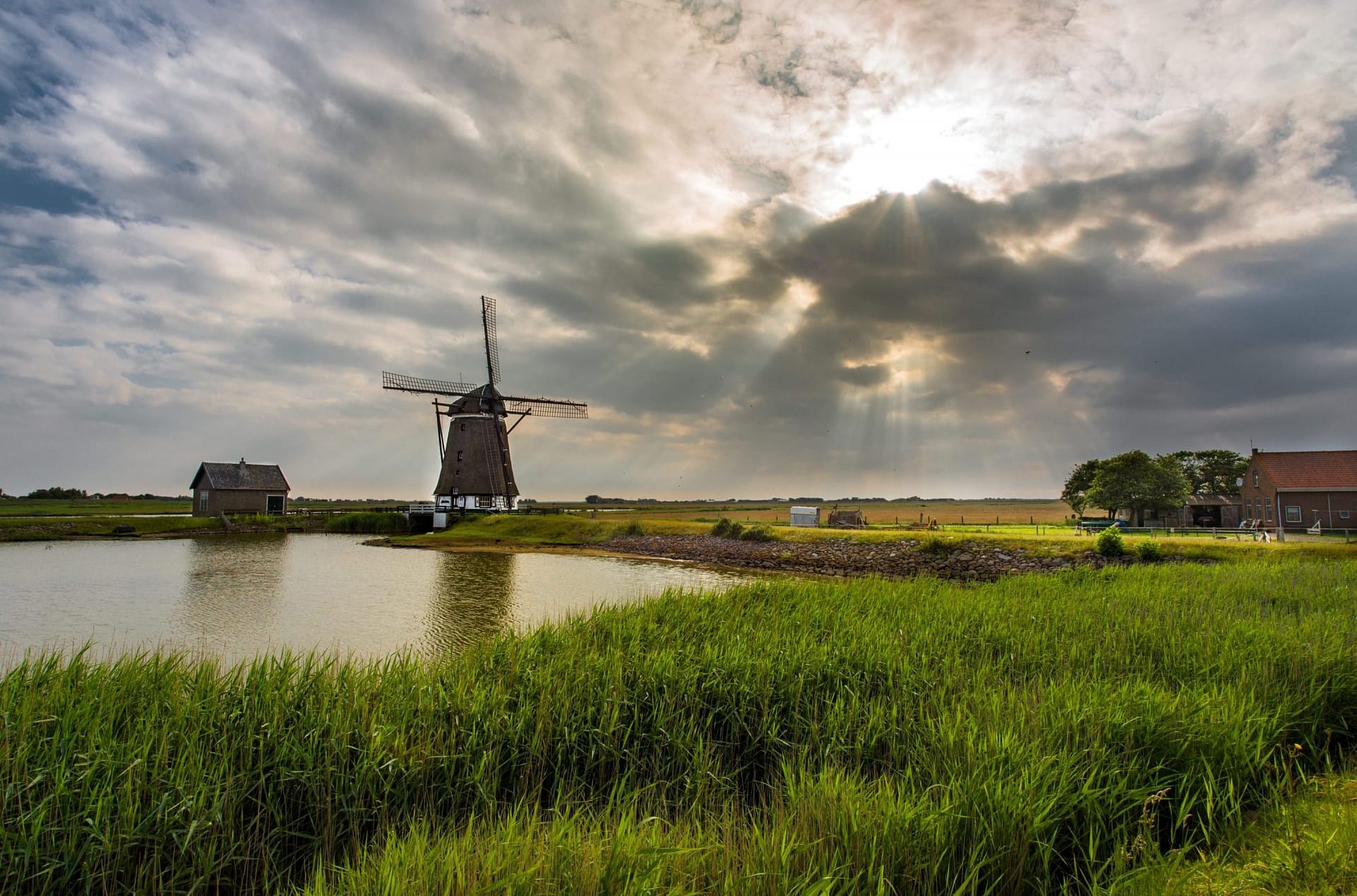The Netherlands has a long and fascinating history with water. With much of the country lying below sea level, Dutch water authorities have spent years developing smart and creative ways to keep inhabitants safe and dry. But as climate change becomes an urgent reality and the Dutch government pushes for a circular economy by 2050, the need for innovation is far from over. Metabolic consultant, Tamara Streefland, explains how Dutch water boards can play a leading role.
Why the Netherlands isn’t under water
26% of the Netherlands lies below sea-level. As the third lowest-lying country in the world, it’s no coincidence that this flat, coastal tract of land was christened the ‘nether’ (low-lying) regions by the Roman Empire. The country’s position on the delta of three major European rivers – the Rhine, Meuse and Scheldt – means that most of its land has been reclaimed and, to this day, is protected from flooding by an extensive system of dykes and levees.
Dutch water ingenuity dates back to the Early Middle Ages, when villages were originally built on man-made hills called ‘terps’ and the first dikes were created to keep floodwater at bay. Over centuries, discoveries like the windmill and, later, steam-powered mills played a critical role in pumping water out of low-lying areas, but the country’s ongoing subjection to a series of disastrous floods prompted a continuous train of intervention.
The Netherlands is best known internationally for its bold engineering move in response to the ‘1953 North Sea Flood. After 5-meter-high waves broke existing dikes in the south of the country, loss of 1,836 lives and enormous damage to property prompted authorities to urgently re-evaluate their coastal defences. Not long after, the Delta Works was developed: a large-scale, first-of-a-kind, technological feat made up of storm surge barriers and dams that would block the estuary mouths of major inlets and essentially ‘shorten’ the Dutch coastline, reducing exposure to the powerful North Sea.
To this day, the carefully engineered system, now listed as one of the Seven Modern Wonders of the World, continues to protect the low-lying south of the Netherlands and its inhabitants. But nearly 70 years on, the planet is changing. Sea levels are rising, land is subsiding, and rainfall is heavier and more frequent, meaning higher and wider defenses will be needed.
Water governance and planning for the future
Globally, water resources are becoming increasingly stressed. Year upon year, the World Economic Forum’s Global Risk Report identifies water crises as one of the greatest impact risks facing the planet, with water stress no longer viewed only as an environmental risk, but as a key societal risk. Indeed, water is at the heart of many of our most pressing sustainability issues: population growth, urbanization, social inequality, biodiversity loss and climate change. As a highly limited and variable resource, we are increasingly constrained by the risk of too much water, too little water, or water that has been contaminated.
In dealing with these challenges, we can learn plenty from the Netherlands. With water having formed one of the cornerstones of Dutch society for so many years, its water governance model attracts enduring international attention and is frequently referenced in the context of global present and future water challenges.
Dutch regional water authorities are among some of the oldest governing bodies in the Netherlands. While national government, provinces and municipalities all play a role in the National Water Plan, the country’s 21 tax-funded water boards oversee water quality and delivery, as well as flood defenses in their respective regions. Collectively, they are responsible for maintaining 18 000 km of dikes, 225 000 km of waterways, and treating 2 billion m3 of wastewater annually.
But they need to be thinking about the future too. In response to the challenges posed by climate change, global resource scarcity and declining surface water quality due to the many waste products and pesticides in the water system, Dutch water boards have an integral role to play in contributing to the Netherlands’ sustainability ambitions of a fully circular economy by 2050.
Opportunities for circularity
Together with engineering firm Witteveen en Bos, Metabolic is helping a number of Dutch water boards explore the ‘circular’ potential of water. This involves a fundamental shift in the way that wastewater is viewed: it is not merely a by-product to be treated and managed, but rather a valuable bank of resources that can save us energy and money, and supplement our growing demand for virgin resources. The core focus is on making the water cycle more resource-efficient, by working towards a model in which raw materials are maximized and reused, and energy is produced from waste. Also critical is the reduction of hazardous substances to ensure a stable freshwater supply for future generations.
Examples of such circular resource loops might include the potential for phosphates found in urine and faeces to be turned into regenerative soil fertilizers, and the cellulose fibre from toilet paper to be used as a base material for bioplastics production (given that the Dutch flush 180 000 tonnes of paper down toilets each year, this carries glaring costs and opportunities.) Energy neutrality is another key opportunity, with the potential for sewage sludge to generate renewable energy in the form of biogas, or increased efficiency of water purification systems through improved water grading and separation processes.
The next step: sharing the knowledge
With their centuries-old knowledge and pioneering infrastructure, the Netherlands is uniquely positioned to play an important role in the realization of sustainable and circular water systems. And key to this is the acknowledgement that they cannot do this alone. While cities and countries across the planet will continue to face their own context-specific challenges, water is ultimately a shared resource. Water systems are fundamentally interconnected, and how we treat water within one context can directly increase or decrease its quantity or quality in another. Our one planet has limited resources, and water can no longer be seen as a free and never-ending resource.
The Netherlands Water Partnership works to connect the Dutch Water Sector with partners all over the world, as a means of sharing and gaining access to sustainable water solutions. Through these avenues, Dutch expertise has played (and continues to play) a role in some of the world’s most significant water projects, including the New Orleans’ flood protection plan, climate adaptation in the Maldives, wastewater reuse in China, and measures to build a water resilient Jakarta, to name but a few examples.
To learn more about how Dutch water boards are taking steps towards circularity, have a look at our Delfland Water Board report [in Dutch].
Our work with the water boards of Vallei en Veluwe and Wetterskip Fryslân is ongoing, and key learnings will be shared over the coming months.






